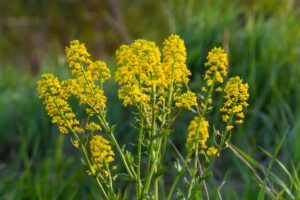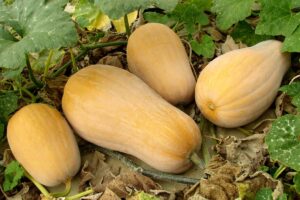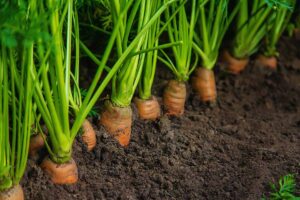Before you became a gardener, you may never have heard the term “bolting” before.
At least, not in this particular context. Maybe you’re only now hearing the term tossed around by other gardeners for the first time and you’re wondering what it means.
I get you. Once upon a time, I was hearing that word for the first time, too.
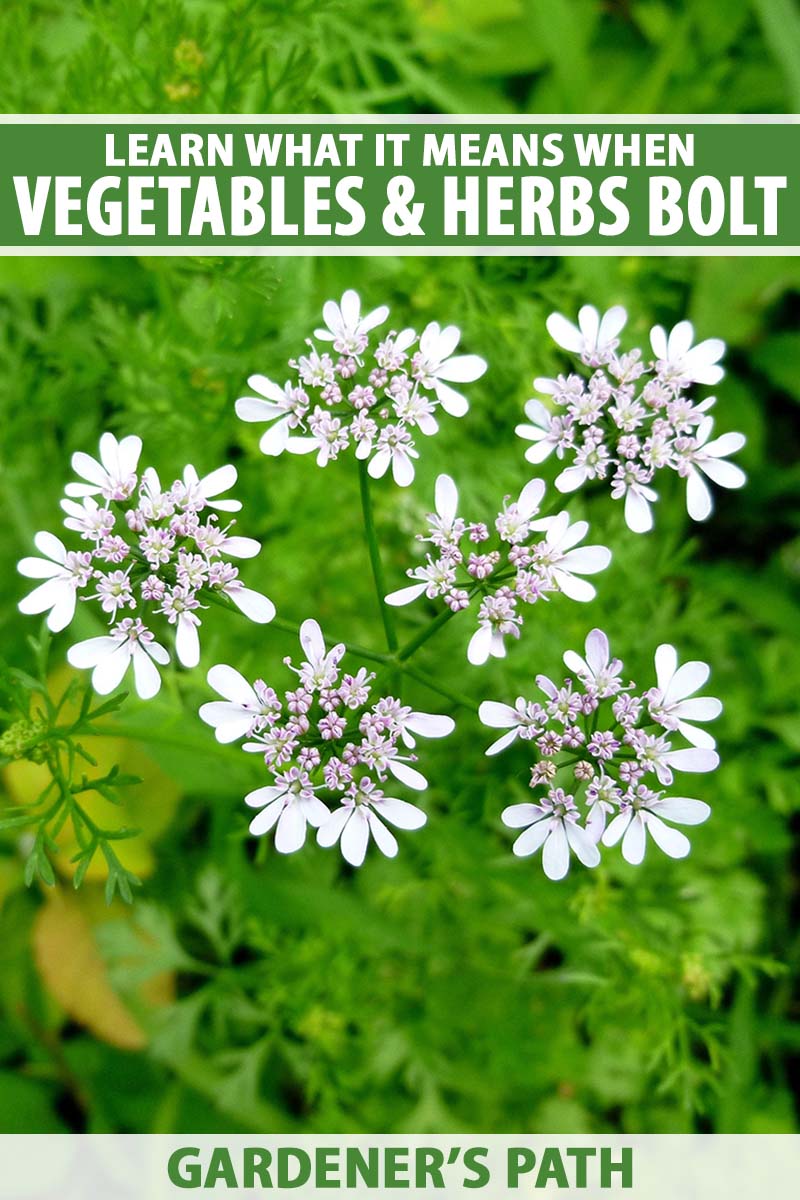
We link to vendors to help you find relevant products. If you buy from one of our links, we may earn a commission.
In this guide, you’ll learn all about what it means when gardeners say that a vegetable or herb plant has bolted. I think you’re going to fall in love with the term, as it’s quite the accurate visual!
Ready to get the skinny on this key gardening term and its potential effect on your harvest, so you’ll understand how to prevent and manage it?
Here’s what you’ll discover, up ahead:
What You’ll Learn
What Is Bolting?
First, the basics: when we say that a plant has bolted, what we really mean is that it has started the reproductive process. It’s developed a flower stalk, and is on the way to producing seeds. Another common term you’ll hear is that the plant is “going to seed.”
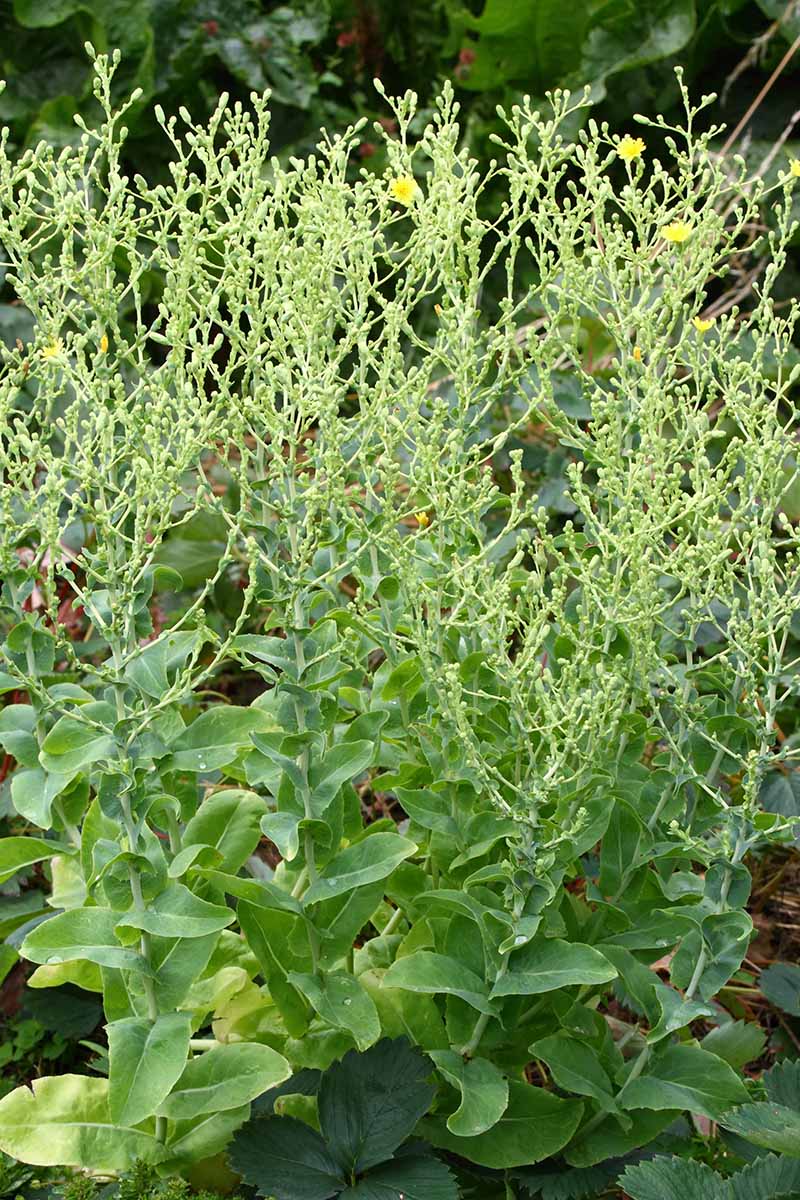
Instead of focusing on growing, it has now turned its full attention to reproduction. It’s dashing to the next step of its life cycle, hence the name.
For “vegetables” that are technically fruits, like squash, tomatoes, and eggplant, as well as our favorite legumes like lima beans and peas, flowering is a key part of the process. Without pollinated flowers, these plants wouldn’t produce the produce that we love to eat.
Leaves and root vegetables are a different story.
Going to seed is a perfectly normal process triggered by an intricate combination of factors, from day length to temperature to various other environmental stressors, say the experts at the Michigan State University Extension.
Sometimes, gardeners don’t mind if a leafy vegetable or a root crop flowers and goes to seed, especially if the days are edging close to the end of gardening season and we’ve got heirloom, open-pollinated annuals or biennials to collect seeds from.
Some vegetables, like artichokes and asparagus, actually grow as perennials, flowering before dying back and going dormant through the winter to return again in the spring.
Or perhaps we’re happy to let a patch of herbs like parsley, mint, or dill burst into bloom, for the benefit of local pollinators that will show up and in turn help to pollinate other plants in the garden.
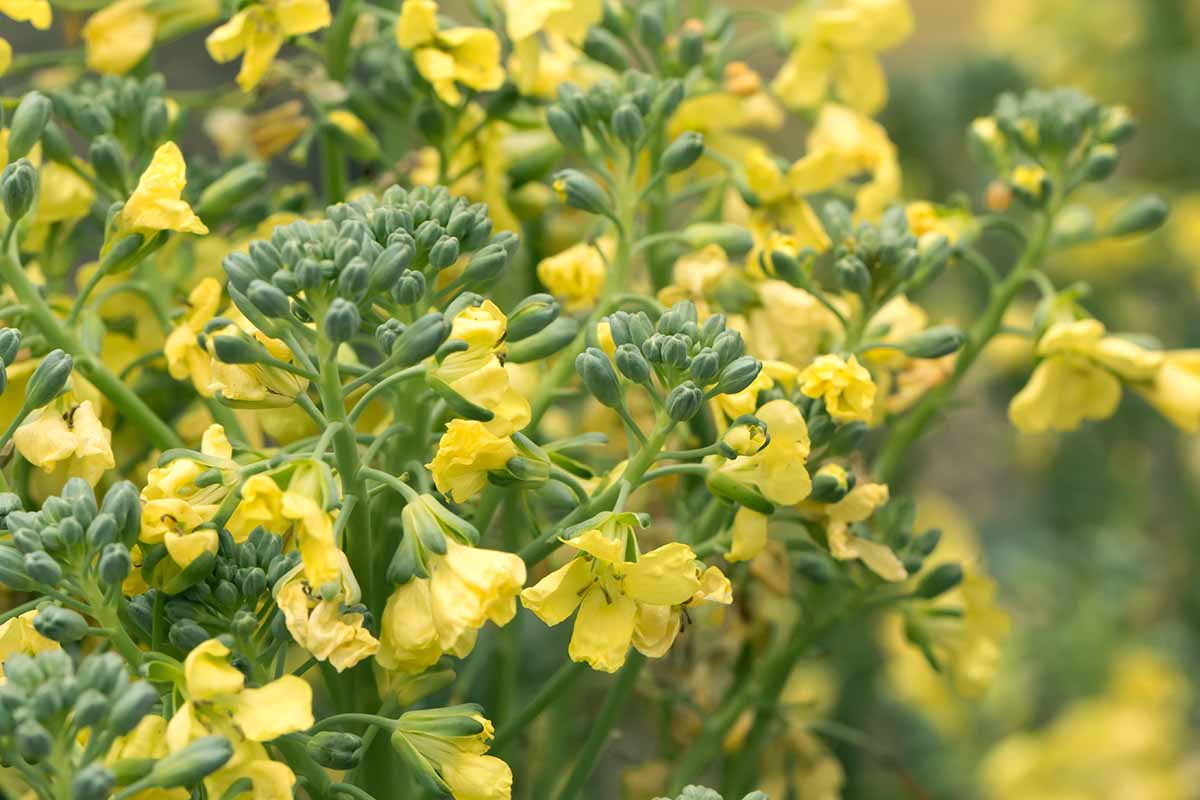
But bolting can pose a problem in certain crops. Leafy plants like chard or lettuce that are devoting their energies to reproductive processes are no longer producing the tasty greens and herbs that we were hoping to harvest.
Various environmental factors can give a plant the signal to begin the reproductive process way earlier than we would like – such as in the case of my arugula, which tends to bolt a few seconds after it germinates.
Okay it’s not that fast, but it certainly feels like it!
The problem is that once a leafy plant like kale or bok choy starts going to seed, it becomes less delicious to eat. This is a concern if you’re growing greens, herbs, or certain vegetables like broccoli and celery.
Focused on reproduction, it sets up bitter chemical defenses against pests and disease in order to ensure the survival of the next generation of seeds. This means arugula and other vegetables that have bolted will typically start to taste bitter, with a tough texture.
Rather than continuing to put on new growth, production of the parts that we love to pick and eat will be stalled for these plants.
Other vegetables – like roots that we love to eat such as turnips, beets, carrots, onions, leeks, and radishes – grow on a biennial cycle.
When environmental factors trigger these plants to flower and go to seed early, in the first year of growth rather than the second, your underground harvest will suffer.
Bitterness, a spicy flavor, and a less-than-appealing texture can all come into play for these plants as well.
This is why it’s important to get out in the garden and check on your growing herbs, greens, and veggies every day if possible. Not only will you be able to notice any pest or disease issues earlier and more readily, but you’ll also be able to look for signs of early bolting.
Signs a Plant Is About to Go to Seed
Let’s talk about how to tell if your carrots, arugula, cabbage, radishes, or other delicious varieties of homegrown produce are about to go to seed.
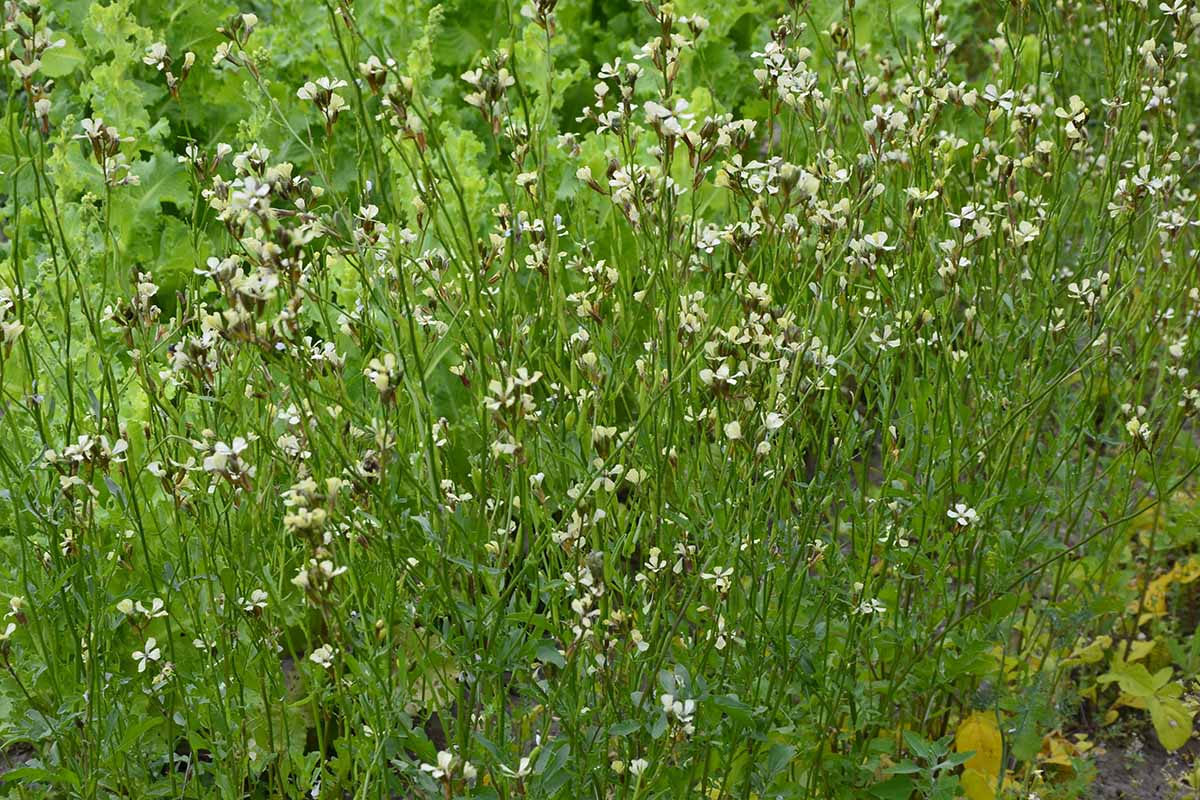
A plant that’s thinking seriously about bolting may begin to grow upwards and become leggy, straining toward the sun if it has perceived changes in the amount of light that it’s receiving.
It will begin sending up stalks that look suspiciously thick. These are flower stalks, bent on producing flowers and seeds!
Once the flowers appear, the plant is well on its way to reproduction. You can certainly still harvest leaves or veggies if you’d like, but they may not taste very good.
So, there’s always Plan B: you may be able to let the process continue unchecked, and save the seeds for planting the next season! We have guides for saving your broccoli and carrot seeds for next spring that you might like to read next.
What Causes Bolting?
While it’s normal and natural for these plants to produce flowers and seeds eventually, peak harvest time typically happens in advance of this. But we can’t control the weather, and other factors may come into play to make your plants go to seed early.
You might find yourself standing in the garden in the middle of the summer, staring blankly at a flower stalk on your cilantro, wondering what possessed your herb to go to seed already.
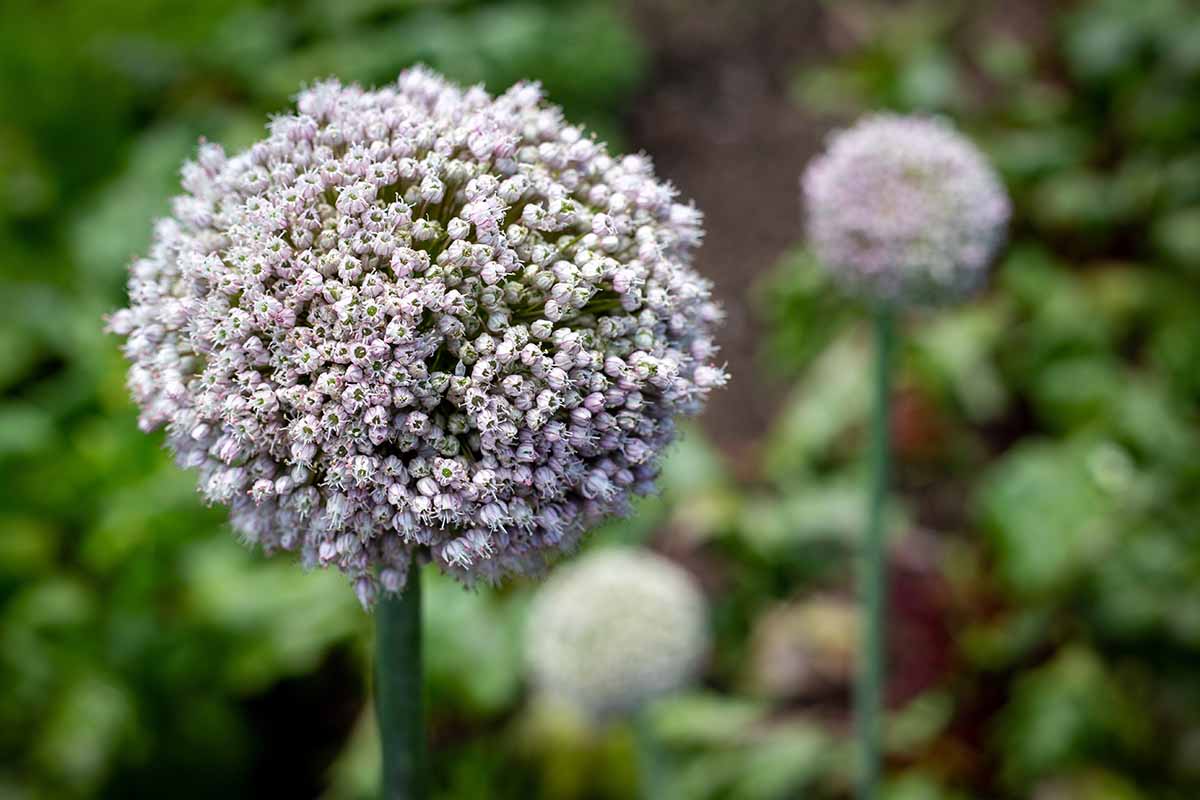
The reason bolting happens in the first place is often because a change in temperature or stress levels propels the plant to reproduce before it dies. A prolonged cold spell can cause early seeding, as your garden may think it’s time to wrap up growth, reproduce, and get ready for death.
Biennial plants may be prompted to start the process early, before settling in for a winter of dormancy prior to setting seed. A stretch of cold nights and hot days, or unexpected late-spring frosts, can have the same effect.
In addition to a lack of light, as mentioned above, inconsistent watering, a lack of nutrients or an overabundance, a lack of space in the garden, or disease may also encourage your plants to hurry up already and start pushing out flowers.
Cool-weather crops, such as kale, carrots, and broccoli, may begin the reproductive process when the days get too hot. Warm-weather crops may do the same if the weather quickly becomes unexpectedly cold.
At this point, you may be wondering, “How can I stop my plant from going to seed too early?”
Here’s a hint: prevention goes a long way toward preventing bolting.
How Can I Keep My Plants from Going to Seed Too Soon?
Before you purchase any seeds for your garden, take a moment to look up your area’s USDA Hardiness Zone if you haven’t already.
When you’re planning your garden, make a list of which herbs, leafy greens, and other types of vegetables thrive in your area. Consider your climate, as well as the length of your growing season.
Good picks for your area are going to be less likely to bolt before you’re able to bring in a harvest. A carrot grown in the cool summer of a northern garden will be less likely to bolt than one grown in the hot and humid south, for example.
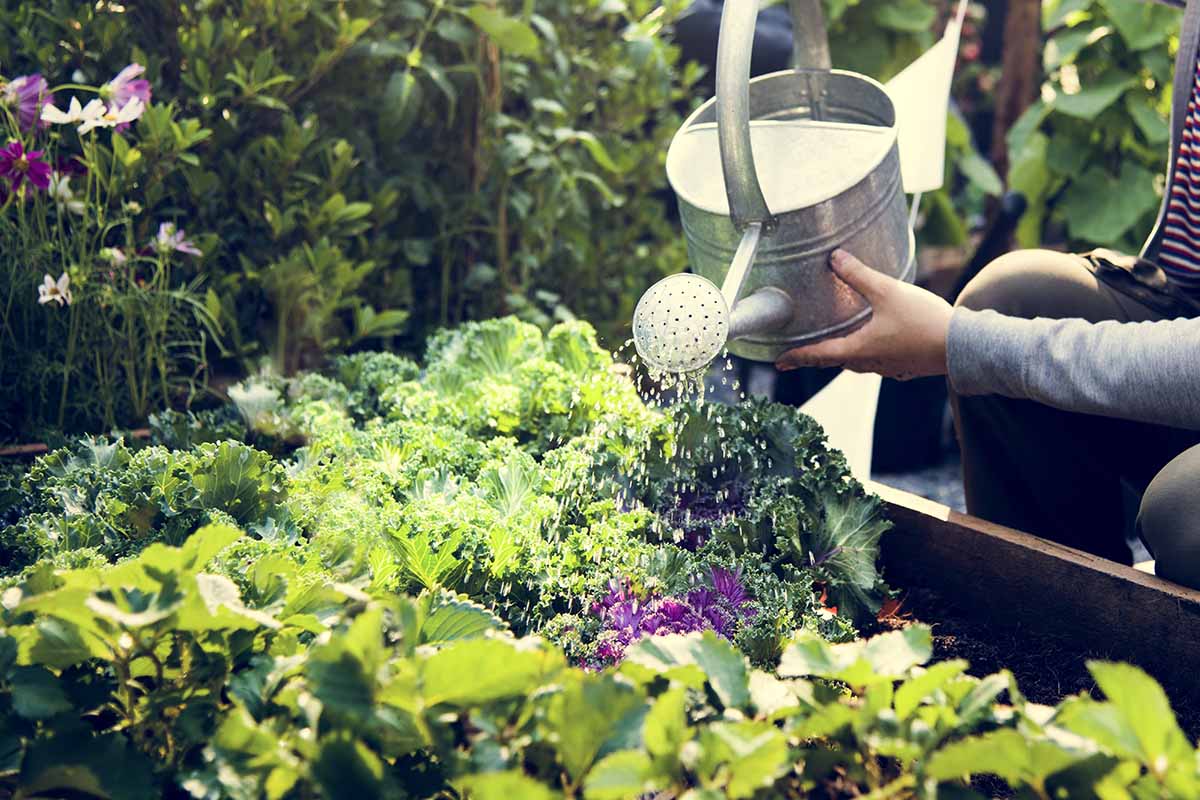
Locally sourced heirloom varieties also possess qualities passed down through the generations to make them uniquely suited for growing in a particular climate or conditions.
Planting time is also key. While leafy greens tend to grow pretty quickly, storage vegetables often have a much longer number of days to maturity. If you’re not able to provide the conditions they prefer within the length of your local growing season, choose different varieties that will be ready to harvest before it gets too hot, or too cold.
Now, this doesn’t mean you can’t grow carrots if you live in Texas. It just means you need to plant a bolt-resistant cultivar that’s suited to your region, and be sure to plant it at the right time.
Over the years, breeders have developed bolt-resistant and heat-tolerant cultivars of certain plants to help limit early seeding in commercial crops. Their efforts have made gardening simpler for your average backyard gardener, too.
Since I know that cilantro tends to bolt early even here in my northern garden, for example, I buy cultivars bred to be slow to bolt so I don’t have to deal with early flower stalks before I’m able to bring in a harvest.
So keep an eye out for resistant varieties of your favorite veggies, greens, and herbs to match with your local climate, and choose cultivars that will mature within the length of your growing season.
Giving whatever seeds you plant a good start can also help – seedlings that are stressed because they haven’t received enough light tend to be more prone to bolting as they mature. Proper care – by providing enough light to prevent legginess, and adequate moisture – sets them up to be healthy plants.
Follow that up with best care practices throughout the season. Though some plants require little maintenance, it’s still important to keep an eye on the weather forecast, and plan accordingly.
Provide more water during heat waves or times of drought, and provide shade protection if you need to. Frost cloth can be used to protect plants in cold snaps. Mulch can be used to provide protection and maintain moisture.
Meet your plants’ needs by providing them with a growing environment that’s as free of stressors as possible, do what you can to buffer any extreme fluctuations, and they will reward you with delicious harvests.
And remember, if your arugula, spinach, or carrots go to seed too early, you’re far from alone. It happens to all gardeners at some point or another. Salvage what you can, and collect seeds from the rest if you wish. Pull the plants, and toss them on the compost pile.
That’s the beautiful thing about gardening – there’s always next year!
Even Beginners Can Take Steps to Block Bolting
Now that you know what the term means, you can chime in when those other gardeners you know talk about a plant that’s gone to seed too early.
And you can even provide some tips of your own! If you haven’t felt like a true gardener up to this point, you definitely will now.
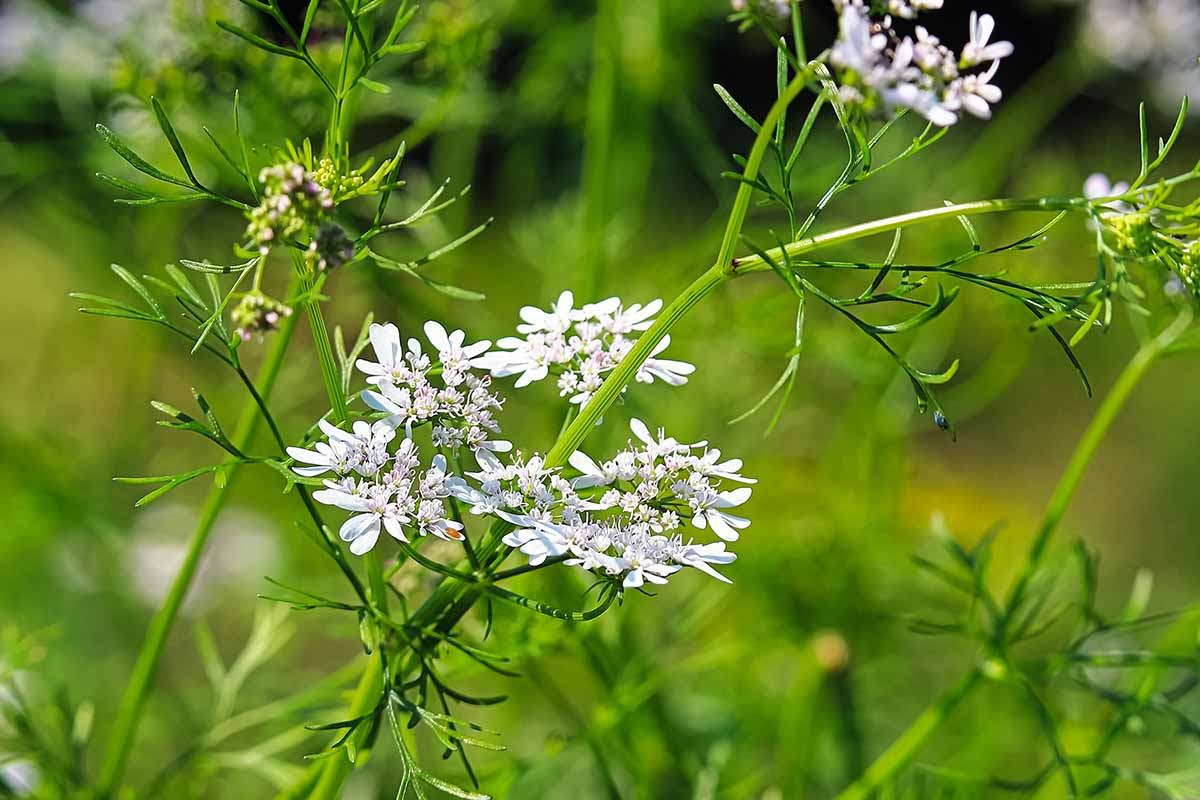
Have you ever felt frustrated with a plant that bolted? We’d love to hear your stories and questions in the comments below.
Ready to improve your veggie patch even more? Read these guides next to learn how to troubleshoot even more problems in the garden:
